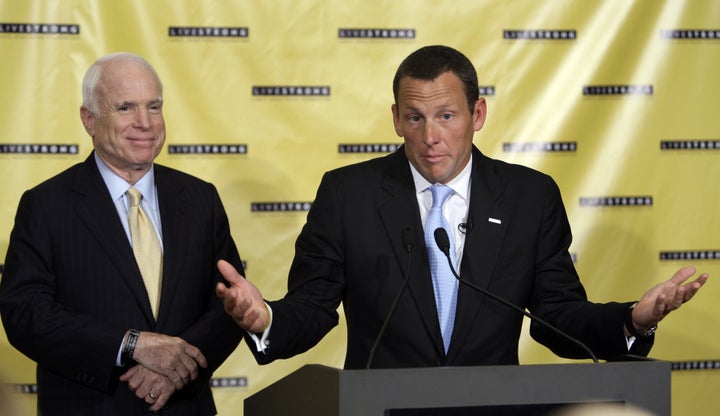
In tough economic times, many of us curb our philanthropic impulses and keep money in our wallets that would normally go to the causes we support. And that's completely understandable. However, innovative charitable endeavors -- even in $1 increments -- can change the world. And that's where the future of philanthropy may well lie for the coming years.
Lance Armstrong, perhaps the most famous cancer survivor on earth, was training for his record sixth consecutive Tour de France victory. It was the early spring of 2004 and Armstrong wanted to use this triumph to raise funds to serve fellow cancer survivors. But how? Nike came up with a bold idea. The company would produce five million silicone wristbands emblazoned with the word "LIVESTRONG" and contribute another $1 million in cash. The bands would be yellow, the color of the leader's jersey in the Tour de France, and anyone who wanted to support Lance's cause could buy one for $1 on his foundation's website, promoting cancer awareness on their wrists.
Today, more than 80 million bands have been distributed, which has helped our comparatively small nonprofit fund programs and advocacy efforts that serve cancer survivors. But those numbers, impressive as they are, understate the true impact and innovation of the program. Somehow, an almost weightless piece of yellow silicone managed to democratize philanthropy. Through the power of this elegant idea, anyone with a dollar could fully participate in a global movement. Across age and income groups, geographies and cultures, the bands accelerated the transformation of philanthropy from an activity dominated by relatively few people with excess money or time into a form of expression and participation available to anyone, anywhere.
When I was approached by McKinsey & Company to share my perspective on social innovation, I was excited to share the unique story of how LIVESTRONG was able to coalesce a community around a symbol and an idea. The What Matters module has brought together a diverse and inspiring group of individuals to share their insights on social innovation. From Rockefeller President Judith Rodin explaining 'scuba rice' to Northern Rangelands Trust Founder Ian Craig discussing wildlife conservation and community development in Kenya, McKinsey has brought together an incredible group of social innovators.
As part of McKinsey's Social Innovation initiative, they launched a video contest last month that called for one minute video submissions that highlight an organization innovative approach to a chronic social problem. In less than a month, the contest received close to 150 videos from all over the world. I was privileged to be asked to be a part of the Selection Committee that would narrow down the field to the top eleven finalists.
I was inspired watching videos of these fantastic organizations and their unique approaches to addressing the most pressing social issues. The finalists have now been announced with winners to be announced December 12th. Among them may well be the next social innovation approach that, like a little yellow wristband, revolutionizes the way we view the world. Visit, view and vote!
